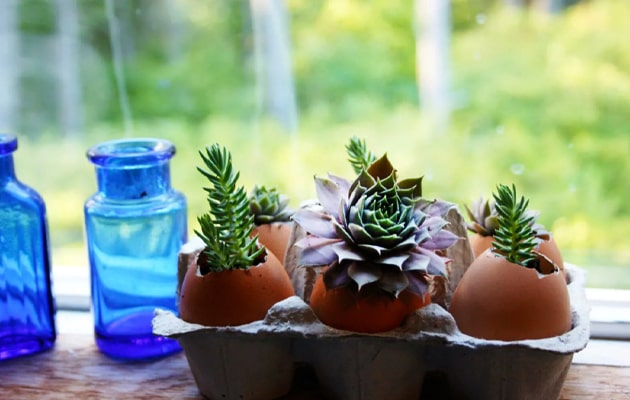If you want your house to be full of greenery and fresh air, most probably you will go for houseplants all-around your house. When it comes to nurturing the plants, most of us think we need some expensive artificial stuff to fertilize the plants.
But the truth is you can have the best of results just by using home waste like Eggshells!
Nothing is a waste if you know how to recycle it. Eggs are essential food items in our day to day life. Most probably, you just use the yolk and the white sticky part to make various delicious food items and throw away the shells.
But, what if instead of throwing away, you can use them to fertilize your very favorite houseplants?
The Importance of Eggshells for Houseplants
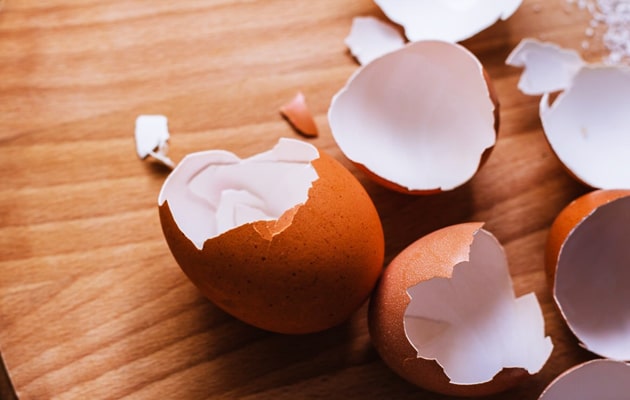
You might have heard this question or seen on forums ‘are eggshells good for indoor plants.’
There are opinions from both sides — some say eggshells are good, and some say they are not. But, according to most of the experts and nutrient specialists, eggshells are pretty good calcium suppliers for indoor houseplants.
Calcium is a necessary key nutrient for indoor houseplants. One can use commercial fertilizer that contains calcium carbonate.
But why would you pay some extra penny if you can have a natural source of it from eggshells? Crushed eggshells contain more than 90 percent calcium carbonate that can be the super supplement for your indoor plants.
All living creatures need calcium to survive; plants are of no difference.
This element is generally responsible for altering the PH level of the soil. Calcium helps to mitigate the damage of the soil that is caused by fertilizer overdosing.
So, the proper balance of calcium is needed to maintain the PH level of the soil.
There are some natural ways for outdoor plants to absorb calcium, but when it comes to indoor plants, it is not always ‘bioavailable.’ So, putting some extra effort is needed for indoor plants.
Extra doesn’t mean difficult always, as using crushed eggshells is a simple yet healthy calcium source for your lovely houseplants.
Some plants are prehensile to blossom end rot that can be caused by the deficiency of calcium. If you use crushed eggshells all around the plants, they can replace depleted calcium and protect the plants from potentially deadly diseases.
The calcium of eggshells develops a strong cellular structure for plants. It works like a natural way to provide nutrients for your houseplants.
So, before you add crushed eggshells, prepare them properly, and apply accordingly to get the most out of it.
Which Houseplants Will Be Benefited the Most?
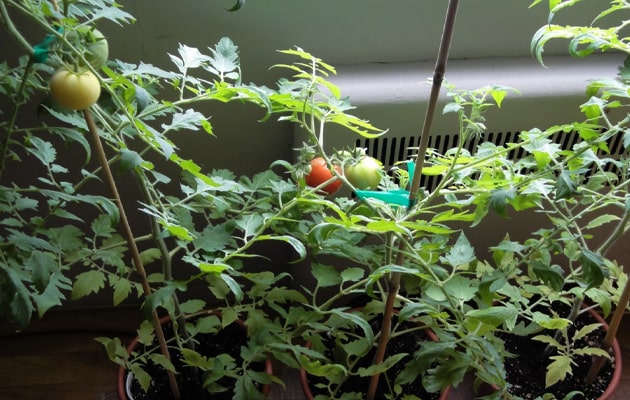
Now you might ask, if the eggshells are good for plants, then for what type of plants?
Pretty much every indoor plant can benefit from the extra calcium that comes with eggshells. Mostly, edible plants are appreciated in this regard as they are hungrier for nutrients.
If you want to grow indoor plants like tomatoes, then using eggshells can be the best natural supplement. They can also be used for indoor carrots, lettuce, broccoli, peppers, and so on.
Other Beneficial Aspects of Eggshells
These can also work as a natural pest repellent. If you fear your houseplants can be attacked by snails, then spread the crushed eggshells around the plants. The sharpness will prevent the plants from the attack of snails.
Eggshells can be used to protect broccoli, tomatoes, cabbage, peppers, and many more that attract the snails.
Eggshells can also be used as a replacement of pots for some indoor houseplants. If there is a risk of damage due to cold and frosts, instead of pots, eggshells can become good alternatives.
After opening and cleaning the shell, you just need to fill it with soil and drop the seed to get a small, transportable seeding.
How to Use Eggshells for Houseplants?
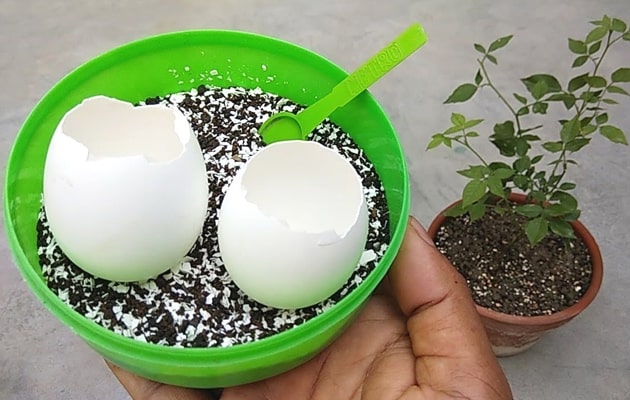
You can either make a fertilizer tea by crushing the eggshells or make a powder by blending it in a food processor to apply them on your houseplants’ soil.
For making fertilizer tea –
- Crush the shells and add them to boiling water.
- Steep them overnight.
- Use the fertilizer tea in the morning onto the soil.
But if you want a make powder of shells then:
- Collect the eggshells in a bucket that is discarded.
- Spray the shells with warm water to clean off the remaining protein if left. It helps to remove the organic debris and unwanted smell.
- Dry the shells overnight.
- Put the dried shells into a food processor or blender and blend them to make a shell powder.
- Use the powder directly onto the soil of your houseplants.
You can also use these shells by mixing the powder with white vinegar and then leave the mixture overnight. The calcium carbonate of shells will be going through a chemical reaction with the acetic acid of the vinegar.
You will find visibly foaming, free calcium, which will be initially absorbed by the plants when you use them.
Using eggshells for your houseplants are easy and simple yet very effective. You should also keep it in mind that using eggshells more than once a year can harm the PH of the soil to an unsafe level. So for best results, don’t add them too frequently.
Conclusion
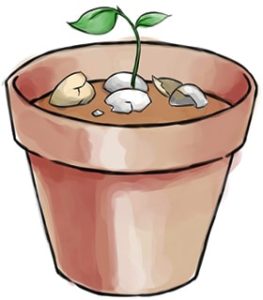
Gardening is a hobby to many, and they love to nurture their plants like their own child.
Gardeners use different methods to keep their plants healthy and growing without diseases. When it comes to home plants, expensive fertilizers are not needed. Rather you can just use eggshells as natural fertilizer without any doubt.
So, now if someone asks you ‘are eggshells good for houseplants?’ you know what to answer.
Eggshells are free, natural, always available, and full of calcium and other necessary minerals and nutrients. If you have always thrown them away and never thought of using eggshells, then this time you can give it a try.
So, next time when you are feeding yourself omelets, don’t forget to feed your plants eggshells.
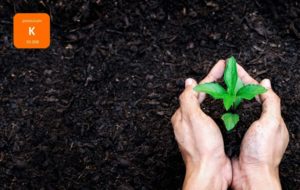
How to Add Potassium to Plants
Potassium is a chemical element that is released by the symbol K. Potassium is a nutritious ingredient for plants. As long as the soil is
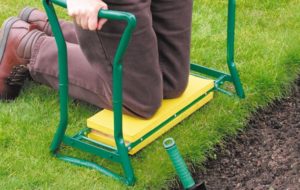
13 Best Garden Kneeler Reviews
Gardening can be a fun and truly rewarding experience. But it can also be quite exhaustive. Think about the number of times you strained your
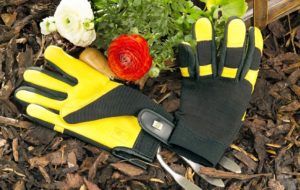
Best Leather Gardening Gloves [Top 10 Picks]
Although gardening is fun and fulfilling, it can also be dirty and stressful. Apart from kneeling and stooling for long hours, you also run the

